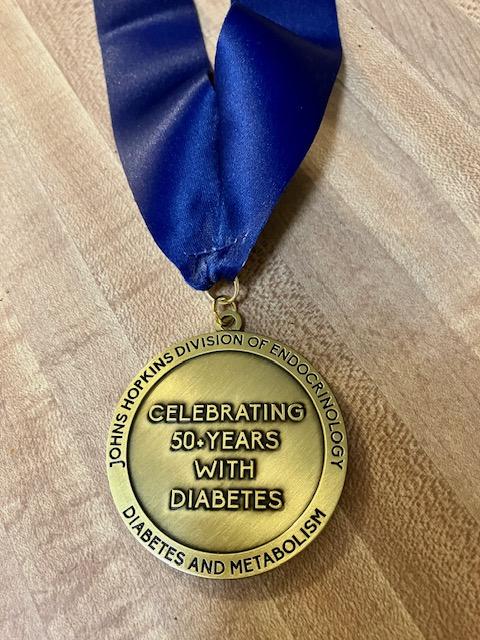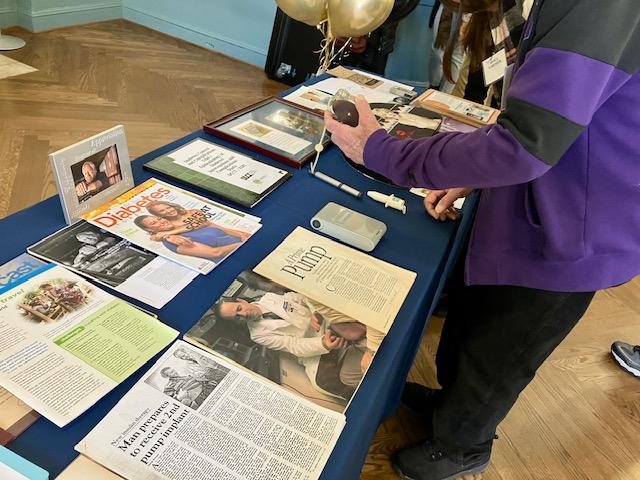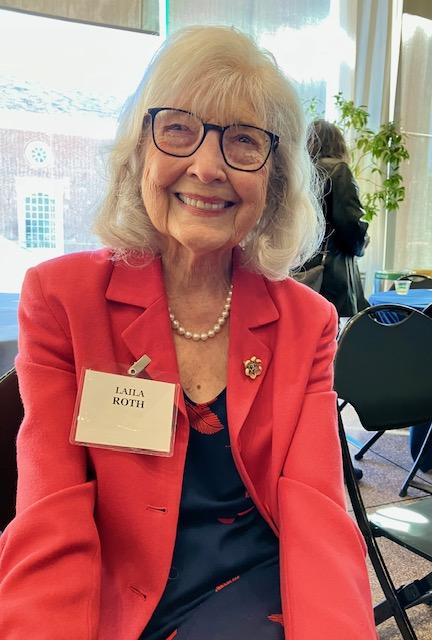Honoring Over 50 Years of Living With Type 1 Diabetes
By Miriam E. Tucker
 People who’ve lived with type 1 diabetes for more than 50 years share stories from the ‘dark ages’ of diabetes, including Miriam E. Tucker, who was diagnosed in 1973.
People who’ve lived with type 1 diabetes for more than 50 years share stories from the ‘dark ages’ of diabetes, including Miriam E. Tucker, who was diagnosed in 1973.
On October 22, 2023, a very special celebration took place in Baltimore, honoring people who have lived with type 1 diabetes for 50 years or longer – including me.
I’m one of the newest members of this extraordinary group, having just hit my 50th “diaversary” in early September. After my diagnosis on Labor Day of 1973 at age 9, a doctor told my parents that I would probably develop eye and kidney complications within a decade.
I still tear up when I think about how my mother kept that from me until I was in my early 20’s and it became clear that the prediction was wrong.
Today, people diagnosed with type 1 diabetes who have reliable access to modern insulin, technology, and treatment can expect to live long lives. That wasn’t the case 50-plus years ago when diabetes management consisted of taking just one or two shots a day of animal insulin and only being able to monitor using urine glucose tests.
There were no human or analog insulins, fingerstick blood sugar tests, A1C measurements, insulin pumps, or continuous glucose monitoring (CGM). All of those treatment options emerged after the 1970s.
Those who were diagnosed with the chronic condition during the 1950s and 60s had to inject less purified animal insulin using glass syringes with steel needles, both of which required sterilization after each use.
Surviving the ‘dark ages’ of type 1 diabetes
Celebrants at the Baltimore event shared stories from those darker days. Some have lived with type 1 diabetes for over 60 years, and a few, more than 70 years. The group shared not only the current day-to-day struggles of living with type 1 diabetes but also the collective memory from decades ago when diabetes care was much, much harder.
Indeed, in one conversation after another, attendees expressed a combination of amazement and gratitude that we somehow survived those dark ages despite the lack of today’s tools. Many of us, myself included, knew others with type 1 diabetes who didn’t make it and were gone too young.
In a short video shown during the program, Don Gifford, a University of Maryland law professor who was diagnosed in 1955 when he was two years old, put it this way:
“This is a celebration, and we all who are here have a lot to celebrate. But let’s not forget the people who didn’t make it…There’s been some discipline, but I certainly wasn’t perfect. A lot of it is, call it what you will, the grace of God, luck, fate.”
The event was organized by Dr. Thomas W. Donner, an endocrinologist and director of the Johns Hopkins Diabetes Center. The idea came to him after he realized he had 47 patients living with type 1 diabetes for 50 years or longer.
“I hear their stories and try to imagine how difficult it must have been to take care of their diabetes…I just decided I wanted to have a celebration for these people for all they went through,” said Donner, who was diagnosed with type 1 diabetes during medical school in the 1980s.
 In one of the event rooms was a memorabilia table of old diabetes-related items that attendees had brought, including old magazine articles, testing equipment, and non-disposable syringes.
In one of the event rooms was a memorabilia table of old diabetes-related items that attendees had brought, including old magazine articles, testing equipment, and non-disposable syringes.
The keynote talk was given by Dr. Irl B. Hirsch, an endocrinologist and professor of medicine at the University of Washington, Seattle. Hirsch summarized the past century of developments in diabetes care along with his personal journey, starting with his diabetes diagnosis in 1964 at age 6, followed by taking care of people with diabetes as a doctor and clinical researcher.
Hirsch was an investigator in the landmark Diabetes Control and Complications Trial (DCCT), which proved that intensive glucose control reduces the risk of diabetes-related eye, kidney, and nerve complications.
Prior to the release of the DCCT results in 1993, some experts doubted whether controlling glucose actually made any difference. Thus, every single honoree at the event had lived with type 1 diabetes for 20 years or longer before the importance of intensive glucose control was proven, now a fact beyond dispute.
How new tech and treatments have increased longevity
Importantly, Hirsch pointed out, in addition to the medication and tools now used to keep blood sugar levels in target range, both statins that lower bad cholesterol and blood pressure drugs that also protect the brain, heart, and kidneys have also contributed to longer survival.
Following Hirsch’s talk, a video with Gifford and eight more 50-plus year type 1 diabetes patients spoke movingly of their journeys. Among them was Laila Roth, diagnosed in 1950 at the age of 8 years after suffering a severe respiratory illness and falling into a coma. She spent four weeks in a small community hospital in Valley Stream, New York, and was discharged on Christmas Eve.
 “They taught my mother how to inject with an orange. I remember she was crying as she did it to me. But I guess I was a tough little girl. I kept thinking to myself, ‘Mom, just do it.’ Well, she learned and she really is my hero. She helped me regulate,” Roth said.
“They taught my mother how to inject with an orange. I remember she was crying as she did it to me. But I guess I was a tough little girl. I kept thinking to myself, ‘Mom, just do it.’ Well, she learned and she really is my hero. She helped me regulate,” Roth said.
Roth also credits her Norwegian mother’s longevity with her own. “My mother lived to 97. So, I do have that.”
Roth’s experience led her to a long career as a dietician, working with people who have diabetes. Today she takes multiple daily injections and uses a CGM.
“For the past two years, I’ve used a CGM, thanks to Dr. Donner’s wonderful nurse who convinced me with great patience to learn about it. It’s changed my life.”
Others in the video spoke about their mothers’ dogged attempts to help them, about feelings of loneliness at a time when there was no Internet to find an online support community, appreciation for the advancements in technology, and feelings of accomplishment for bearing healthy children and achieving career success, despite the challenges of life with type 1 diabetes.
After the video, all the type 1 diabetes 50-plus survivors in the room were given medals during a recognition ceremony that said “Celebrating 50+ Years With Diabetes” on one side and had the Johns Hopkins Medicine logo on the other.
The medal idea came from the Joslin Diabetes Center in Boston, which has been studying long-term survivors of type 1 diabetes since 1948 and awarding 50-plus year bronze medals since 1970.
Gifford said in the video, “I was really committed to trying to get to the Joslin 50-year mark. Since I hit that point, I’m like, every day is a blessing. Every day is a blessing."







